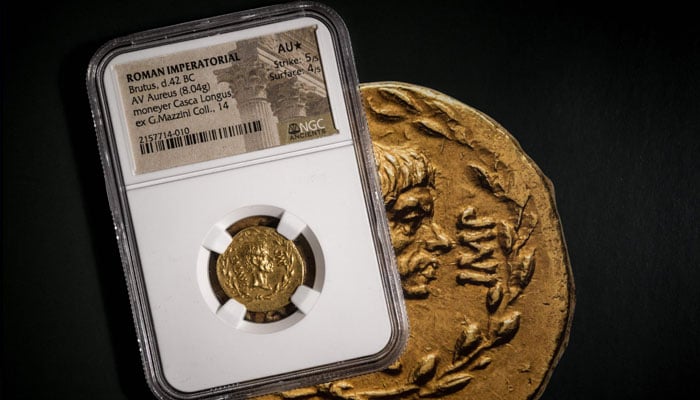Business
This 'living fossil' predates dinosaurs, survived mass extinctions
字号+ Author:Smart News Source:Travel 2025-01-10 13:11:21 I want to comment(0)
When "Little Boy" was dropped over Hiroshima by the Allied forces in 1945, temperatures in the city rose to 7,000°F from ground zero to as far as two miles in the first three seconds of detonation. All forms of life within the radius of the bomb explosion succumbed to their ends instantly. Buildings melted and the once vibrant city was left in ashes as the fire roared from Little Boy in Hiroshima, as per . However, something survived the devastating bomb and it became a story of resilience. Six Ginkgo biloba trees, growing just about a mile away from the centre of the explosion, withstood the hot temperature and fire. For them, it was just another day to survive and continue their lineage. Despite being stripped of leaves and charred branches due to the explosion, the six trees came back to life within months. The trees, also known as "living fossils," have weathered the ice age, mass extinctions, and thousands of environmental changes the Earth has experienced. The reason for calling Ginkgo biloba a living fossil is that the trees date back over 290 million years to the Permian period and have withstood mass extinctions, according to . It was a mass extinction event so bad that it left 96% of all marine species and about three of every four species on land dead, the forests were wiped out and didn’t spring back to life until 10 million years later. Of the five mass extinctions, the Permian-Triassic is the only one that left large numbers of insect species extinct. The evolution was so severe that it took four to eight million years for the marine ecosystems to recover. This period even predates the time when dinosaurs roamed the Earth. The Ginkgo biloba survived and remained the same over millennia with the fan-shaped structure of the leaves. They thrived across Laurasia — the northern subcontinent — for millions of years until the Cretaceous-Paleogene extinction that wiped out the dinosaurs. Many species were wiped out, but the Ginkgos remained strong. By the end of the Pleistocene, they were isolated to populations in China. They could have faced extinction, but they were saved due to their resilience, and surprisingly, humanity helped them tackle the challenge. The living fossils were thought to be extinct in the wild until the early 20th century but they were found to be thriving when small populations were rediscovered in remote China. Researchers have come to speculate that they were preserved by Buddhist monks. Today, Ginkgos are spread widely on city streets, parks and several other places all over the world. They are resistant to pollution, pests and harsh weather that harbours in urban life.
1.This site adheres to industry standards, and any reposted articles will clearly indicate the author and source;
 Related Articles
Related Articles-
کراچی کے دھرنوں میں: ایم ڈبلیو ایم احتجاجی مظاہرین پر کریک ڈاؤن میں متعدد گرفتاریاں
2025-01-10 12:56
-
2025ء کی گولڈن گلوبس میں ایلٹن جان نے اپنی کمزور ہوتی بینائی کے بارے میں لطیفے کہے۔
2025-01-10 12:02
-
2025ء کی گلڈن گلوب ایوارڈز میں تنقید کے بعد میگھن مارکل کو اعزاز سے نوازا گیا۔
2025-01-10 11:56
-
لیلی ایلن نے جاسوسی کی مہارت سے ڈیوڈ ہاربر کے رایا کے راز کا انکشاف کیا۔
2025-01-10 11:28
 User Reviews
User Reviews Recommended Reads
Recommended Reads Hot Information
Hot Information- نشے میں دُھت ڈی آئی جی کے بیٹے کا کار حادثہ، خاتون زخمی
- سباسٹین اسٹین نے پہلی بار گلڈن گلوب ایوارڈ ملنے کے بعد ایک بااختیار تقریر کی۔
- گولڈن گلوبز جیتنے پر جوڈی فوسٹر کے ردِعمل پر سوفیا ویریگیرا کا چونکا دینے والا ردِعمل
- این انجیلینا جولی کا وہ دہکا ہے جس میں وہ جو آپ کو ڈراتا ہے وہ کریں کا اعلان کرتی ہیں۔
- کزرم کے متخاصم قبائل نے دنوں تک جاری رہنے والے جرگے کے بعد امن معاہدہ کرلیا ہے۔
- زیندایا نے ٹام ہالینڈ کے ساتھ رومانس کے بارے میں بڑی افواہوں کی تصدیق کردی
- پرنسز کیٹ نے 43 ویں سالگرہ منانے کے لیے وقت پر وینڈسر واپسی کی۔
- اریانا گرانڈے کی گولڈن گلوبز کی رات غیر متوقع رخ اختیار کرتی ہے۔
- کُرّام امن معاہدے کے بعد، ایم ڈبلیو ایم کے سربراہ نے ملک بھر میں دھرنا ختم کرنے کا اعلان کیا۔
 Abont US
Abont US
Follow our WhatasApp account to stay updated with the latest exciting content













